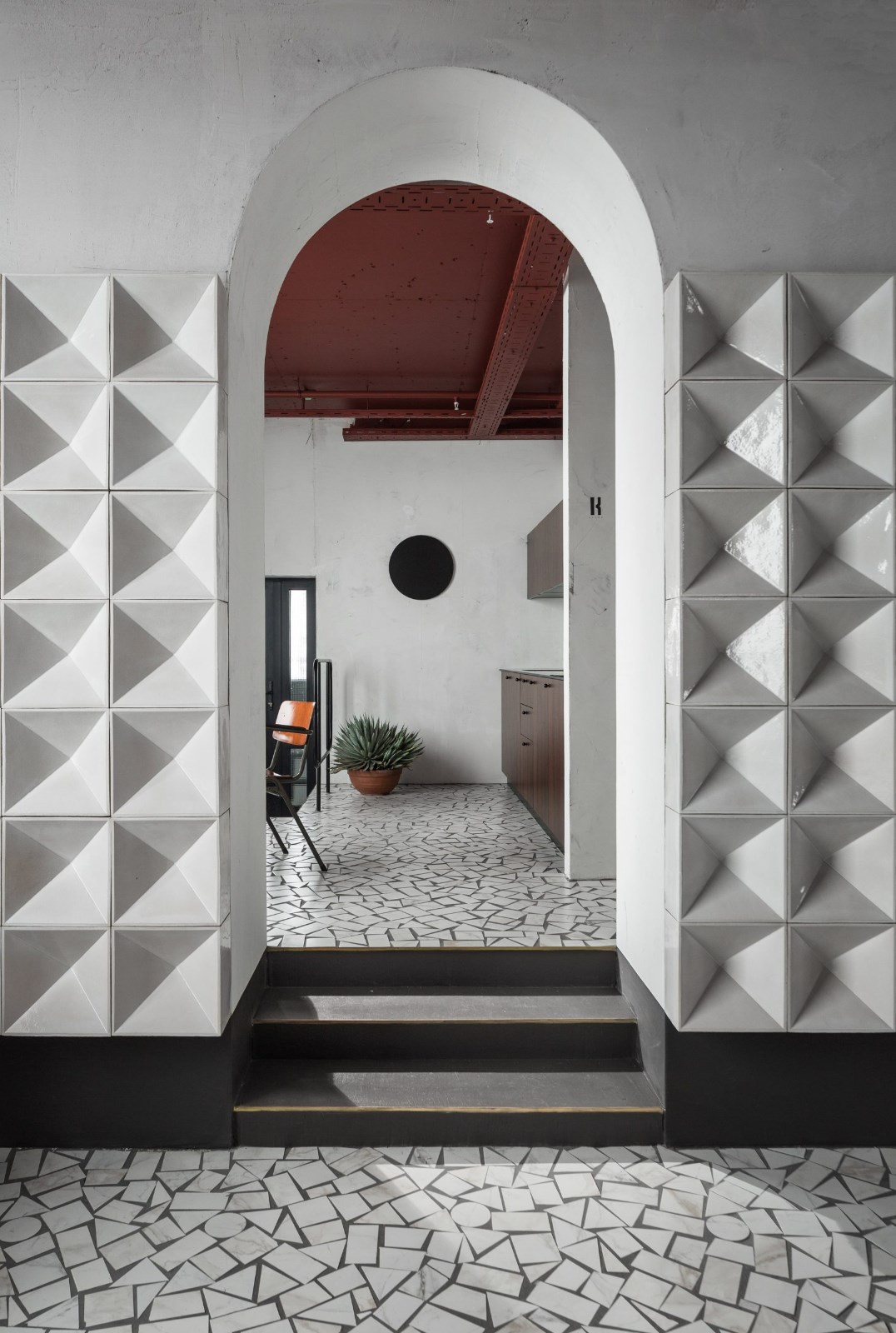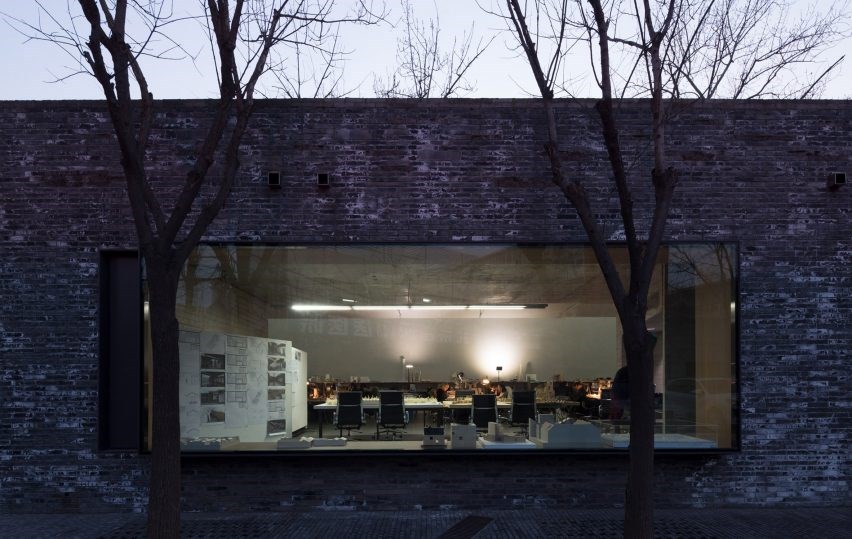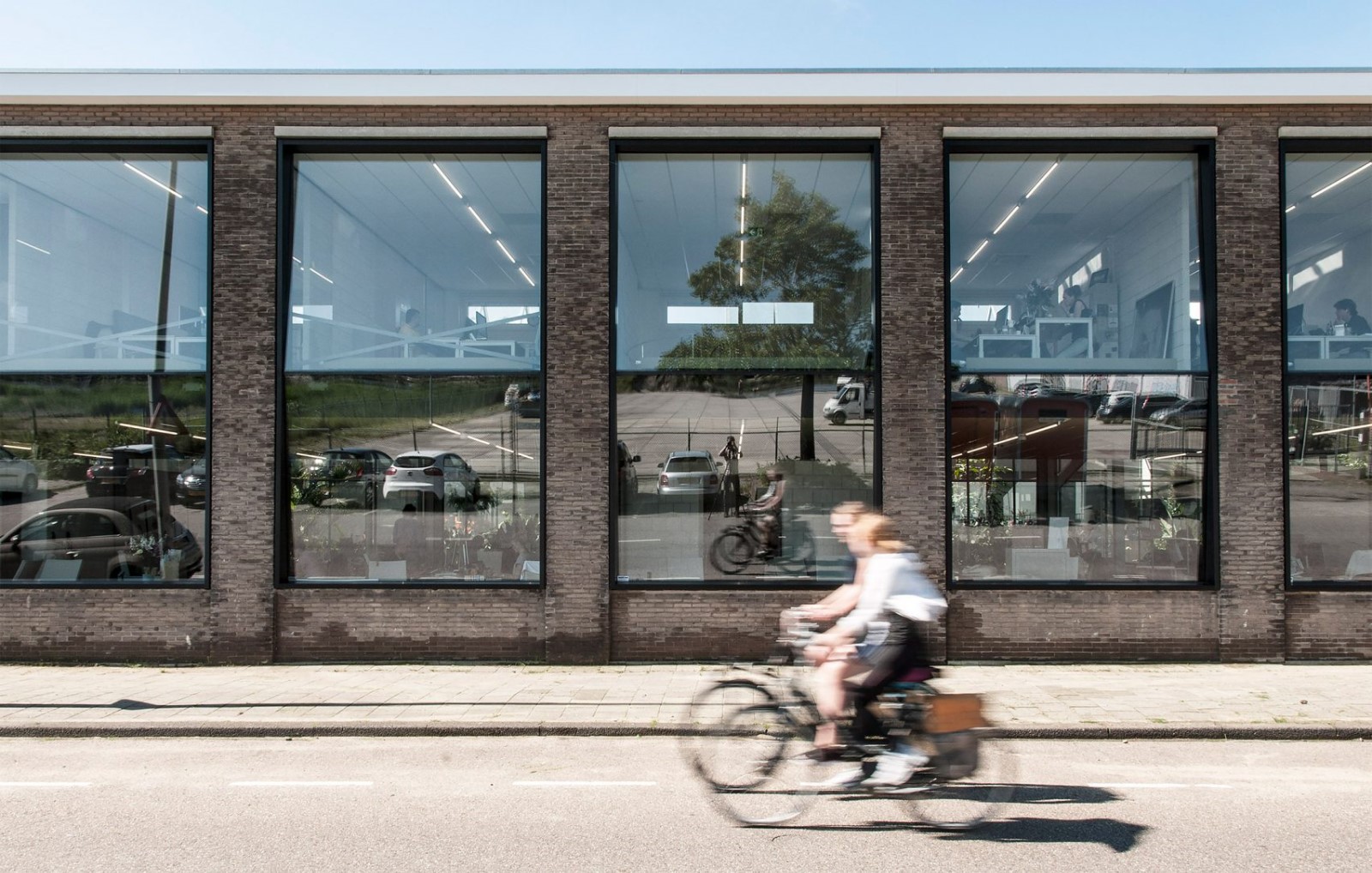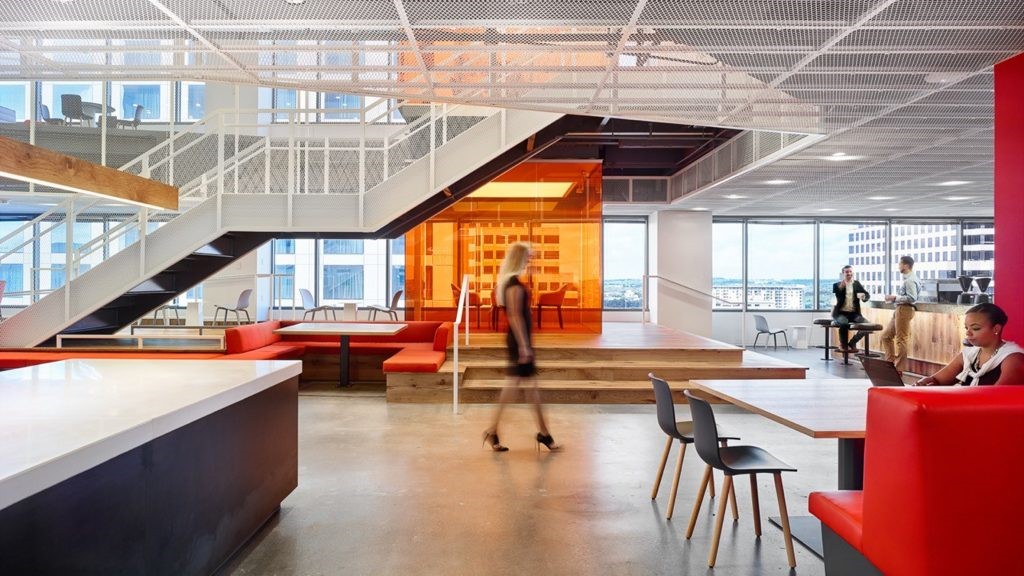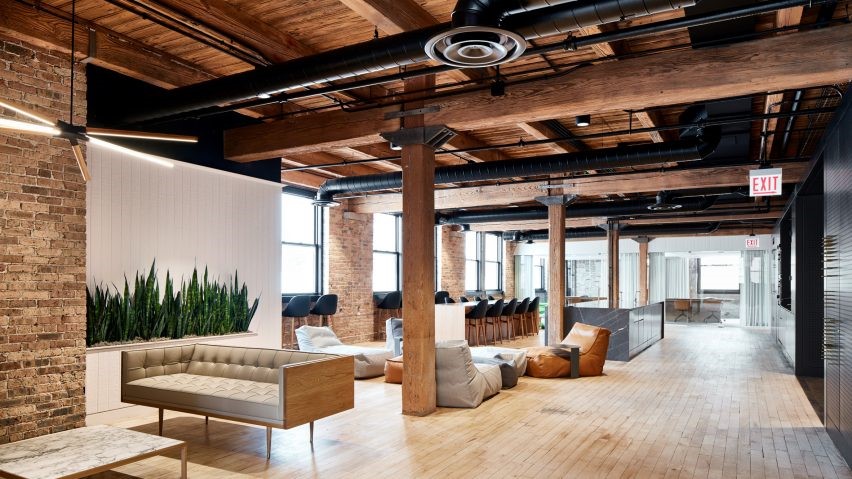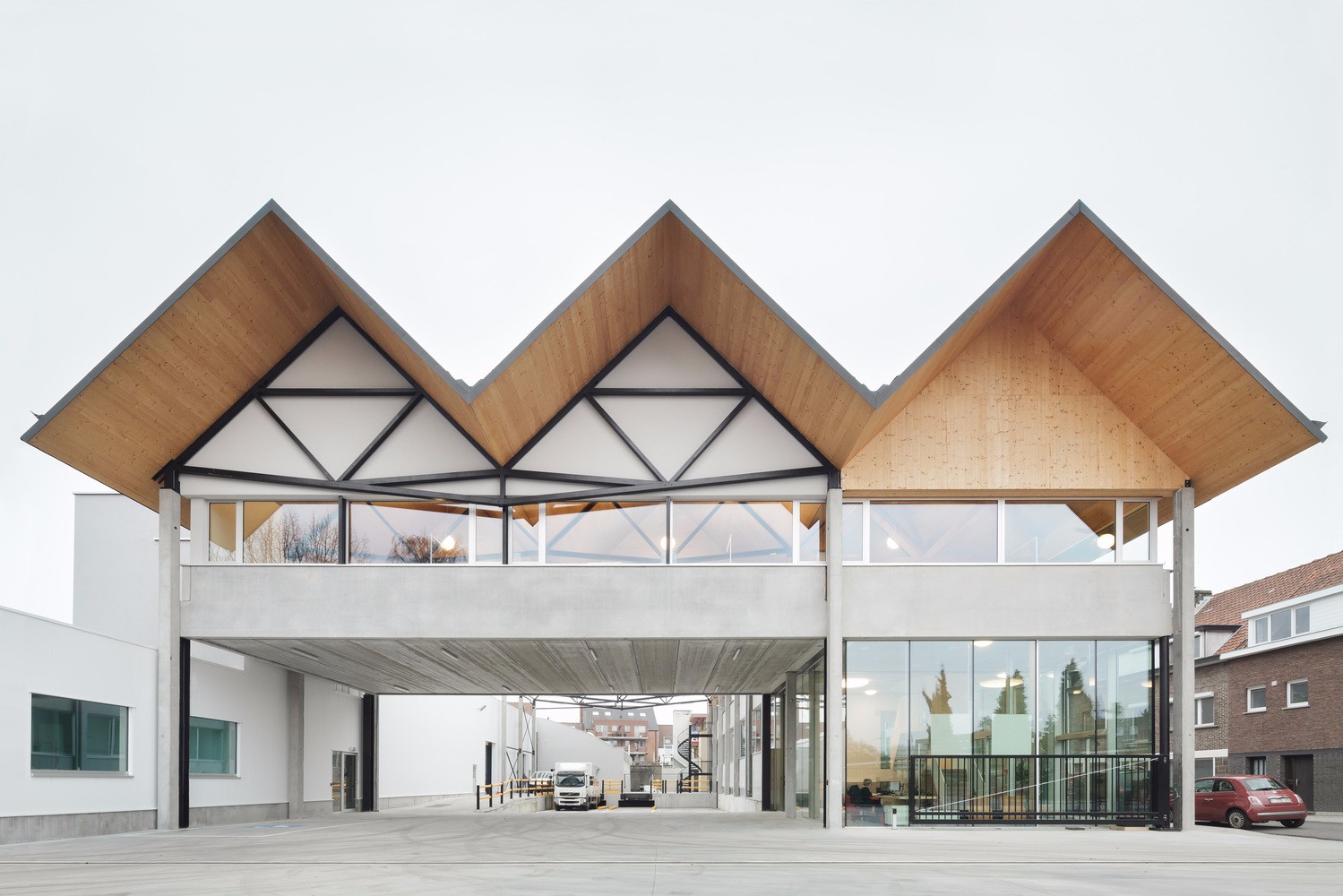Quito Publishing House Estudio A0
2016-12-27 17:00
架构师提供的文本描述。基多出版社位于拉弗洛雷斯塔社区:一个波西米亚人,艺术和紧密结合的社区,在北部基多中心。它独特的特性提出了最大的设计挑战。我们被要求介绍一座办公大楼,那里几乎没有人居住,在一个具有强烈公民意识的社区中,我们坚定地致力于维护其社区的空间价值。我们被分配的项目令人兴奋:三家出版公司,以前住在一座高楼的不同楼层,想要共用一个大空间。他们的员工都是有创造力的个体,具有很强的美感。建筑物的这种三方所有权使我们在如何规划和分配空间方面有了更大的灵活性;所有公司都可以在类似的等级级别内联系起来。这三者都围绕着一个中心的空隙,分享同样的风景的特权,并有机会进入屋顶花园。他们还共享公共空间,我们期望规划和部分的流畅安排能促进社区氛围的形成,类似于社区的特点。
Text description provided by the architects. The Quito Publishing House is located in La Floresta neighborhood: a bohemian, artsy and closely knit community in the heart of Northern Quito. Its idiosyncratic nature posed the greatest design challenge. We were asked to introduce an office building where few exist and in the midst of a community with a strong sense of civil awareness, adamant about preserving the spatial values of its neighborhood. The program we were assigned was exciting: three publishing companies, formerly housed in separate floors of a high-rise, wanted to share one large space. Their employees are creative individuals with a strong aesthetic sensibility. This tripartite ownership of the building gave us more flexibility in terms of how we could program and distribute the space; all companies could relate within a similar hierarchal level. All three revolve around a central void, share the privilege of the same views, and have access to a roof garden. They also share communal spaces and we expect the fluid arrangement of the plan and section to catalyze a community atmosphere analogous to the one that characterizes the neighborhood.
从形式上看,现代伟大的现代住宅建筑启发了许多构成建筑的要素。在La Floresta的一些房子里,建筑和自然交织在一起。走在街道上,人们会发现楼梯下面有一个隐藏的花园,或者一个楼梯在池塘上方毫不费力地漂浮,或者是一条通向房子前门的空间游行队伍。有一层又一层将在拉弗洛雷斯塔揭幕。我们选择模仿现代与自然的结合;创造一个空间序列,引导使用者进入建筑物及其屋顶花园;打开一个中央空隙或“悬挂花园”,充当烟囱,重新诠释殖民庭院,这除了捕捉到基多的天象光外,还提供了一个视觉横截面。工作空间是由一个双层皮肤包裹,其外部部分是一个百叶窗屏幕,部分着色。艺术作品标点符号的共享空间,作为画廊。该遗址的坡度采用传统的基多方式处理:通过集成一个zócalo,由混凝土建造,并覆盖在黑色的石头中。
From a formal standpoint, the great Modern domestic architecture of the surroundings inspired many of the elements that compose the building. In some of the houses of La Floresta, architecture and nature intertwine. Walking through its streets, one discovers a hidden garden beneath a staircase, or a staircase floating effortlessly above a pond, or a spatial procession that leads to the front door of a house. There are layers upon layers to be unveiled at La Floresta. We chose to emulate the mix of Modernity and nature; to create a spatial sequence that leads the users into the building and its roof garden; to open a central void or “hanging garden” that serves as a chimney and reinterprets the colonial courtyard, which besides capturing the zenithal light of Quito provides a visual cross section. The work spaces are wrapped by a double skin, the outer portion of which is a louvered screen, partially colored. Works of art punctuate the shared spaces, which act as galleries. The slope of the site is dealt with in the traditional Quito-way: through the integration of a zócalo, built in concrete and clad in black stone.
基多出版社收到了厄瓜多尔大陆一栋建筑物的第一批利德黄金,因为它打算将环境设计原则应用于热带地区的一座公司大楼。
The Quito Publishing House received the first Leed Gold attributed to a building in continental Ecuador, for its intent of applying environmental design principles to a corporate building in the tropics.
该建筑被设想为一种生物气候机械,其性能将对通风、加热和冷却的机械系统的依赖性降到最低。由于建筑物上没有投射阴影的元素,所以东北面和东南面都会受到大量的太阳照射,尤其是在早晨。将允许调节太阳入射的“窗帘”从建筑物内部转移到外部,作为过滤器,被理解为生物墙,它的皮肤是相互作用的,能够对温度和湿度的变化作出反应。橙色百叶窗响应的气候模拟比在过滤器的每个百叶窗中引入传感器更实惠;空气流量最终取决于人为操纵,这是降低能源消耗的最具成本效益的选择。百叶窗的翅片形状是气动的,以折射光和刺激产生涡旋,加速空气的传递。其图形在部分与可操作的窗口相吻合。中央露台起到烟囱的作用,把空气吸入建筑物的上部,同时也充当从较低层进入建筑核心的天象明灯的漏斗。这种机构还向地下停车场注入空气。一个植被层与维护架共享位于皮肤(玻璃和百叶窗)之间的间隙空间,提供一个额外的过滤器来净化和气味空气,缓冲空气流动和提供遮荫。背面提供足够的热质量来吸收和释放能量。底层的水面除了是一个冷却装置外,还响应了使空气循环可见的需要:它通过水面的涟漪作为建筑物性能的一米。采用这些机制是为了最大限度地利用诸如光和空气等自然资源,并将能源和水的消耗降到最低限度。
The building is conceived of as a bioclimatic machinery, whose performance reduces to a minimum the dependence on mechanical systems of ventilation, heating and cooling. Since there are no elements projecting shadow upon the building, the northeastern and southeastern facades are subject to considerable solar exposure, particularly direct in the mornings. The “curtain” which would allow to regulate solar incidence was transferred from the interior of the building to the exterior, as a filter, understood as a biological wall, whose skin is interactive and capable of responding to temperature and humidity variations. The orange louvers respond to a climatic simulation that was more affordable than the introduction of sensors in each louver of the filters; flows of air ultimately depend on human manipulation, the most cost efficient option to reduce energy consumption. The fin shape of the louvers is aerodynamic so as to refract light and stimulate the generation of vortexes that accelerate the transfer of air. Its figure coincides, in section, with the operable windows. The central patio acts as a chimney that sucks the air towards the upper sections of the building and also serves as a funnel of zenithal light brought into the core of the building at the lower levels. This mechanism also injects air into the parking located underground. A vegetation layer shares with maintenance shelves the intersticial spaces located between skins (glass and louvers), providing an additional filter to purify and scent the air, buffer air flows and provide shade. The back façade provides enough thermal mass to absorb and liberate energy. The water surface in the ground floor, besides being a cooling device, responds to the need of rendering air circulation visible: it serves as a meter of the building´s performance through the rippling of the water surface. These mechanisms were introduced in order to take the greatest advantage of natural resources such as light and air, and in order to reduce to a minimum the consumption of energy and water.
该建筑物有一个雨水收集综合系统,该系统通往浴室和花园屋顶或垂直花园,用于灌溉目的。双管道系统便于沿装饰面进行滴灌,并减少了水的消耗。
The building has an integrated system of rain water collection that is channeled towards the bathrooms and the garden roofs or vertical gardens, where it is used for irrigation purposes. A double piping system facilitates trickle irrigation along the gardened facades and reduces water consumption.
垂直花园在周边的室内充当另一层隔热层,就像上面的屋顶花园一样。当地的安第斯植物被选作园艺用-大部分的水消耗量很低。
The vertical gardens act as another layer of thermal insulation within the chamber of the perimeter, just as the roof gardens above. Native Andean species were chosen for the gardening –most consume low portions of water.
Flexibility and adaptation
建筑物的可持续性与其在一段时间内适应不同用途的能力成正比。QPH的计划是开放的,可供使用的电力、机械、照明和通讯设施,以便于技术升级和维护。
The sustainability of a building is proportional to its ability to adapt to different uses throughout time. The plans of QPH are open and lodge accessible electric, mechanical, lighting and communication installations to facilitate technological up-grades and maintenance.
Construction System and Technological Development
qph是建立在一个系统的预制,部分动画组件,需要密切合作的设计和当地的工业。
QPH was built with a system of pre-fabricated, partially animated components that demanded a close collaboration between design and the local industry.
建筑物周边的维修架用作防尘器,支持盆栽、园艺区,并引入便于清洁窗户和百叶窗的走廊。
The maintenance shelves introduced along the perimeter of the building serve as dust buffers, support for the pots, gardening area, and introduce corridors that facilitate cleaning windows and louvers.
The building incorporates the elements that are necessary to sort, collect and compact waste.
为了支持拉弗洛雷斯的自行车文化,QPH提供自行车架,淋浴和储物柜。在选择建筑物的位置时,考虑到与公共交通系统的联系。
In order to support the cycling culture of La Floresta neigborhood, QPH provides bicycle racks, showers and lockers. The location of the building was selected taking into account is articulation to the public transportation system.
QPH在地面上消退,以便提供一个安全的公共空间,这可能有助于激活周围的城市组织。
QPH recedes at the ground level in order to provide a secure public space that may contribute to activate surrounding urban tissues.
Location La Floresta, Quito, Ecuador
Category Sustainability & Green Design
Leading Architects Jaskran Kalirai, Ana María Durán Calisto
Main Architects Jaskran Kalirai, Esteban Cervantes
Photographs Sebastián Crespo, Jean-Claude Constant
 举报
举报
别默默的看了,快登录帮我评论一下吧!:)
注册
登录
更多评论
相关文章
-

描边风设计中,最容易犯的8种问题分析
2018年走过了四分之一,LOGO设计趋势也清晰了LOGO设计
-

描边风设计中,最容易犯的8种问题分析
2018年走过了四分之一,LOGO设计趋势也清晰了LOGO设计
-

描边风设计中,最容易犯的8种问题分析
2018年走过了四分之一,LOGO设计趋势也清晰了LOGO设计




























































































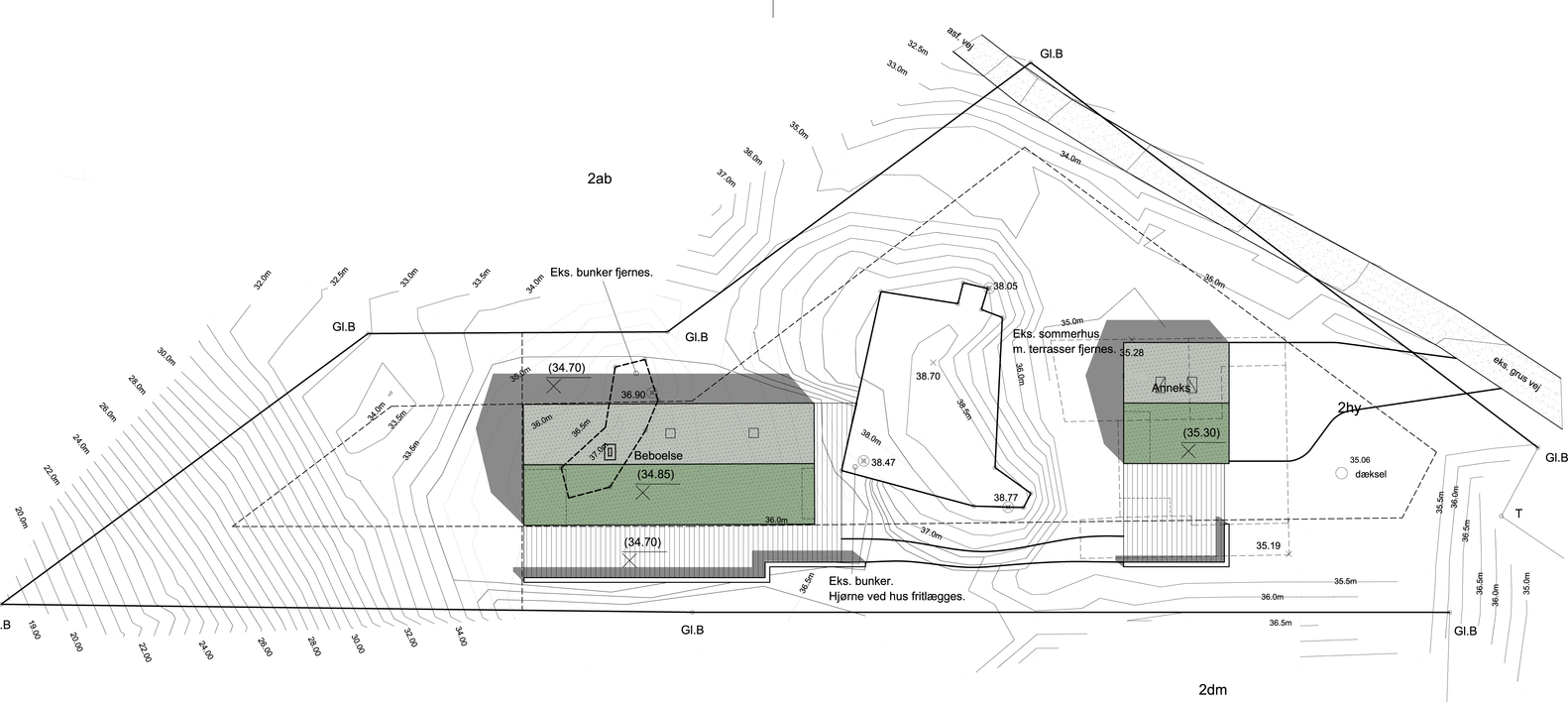
.jpg)
